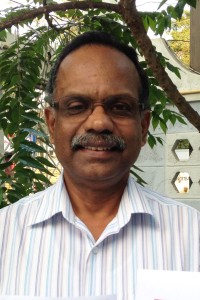

In emergency response and disaster risk reduction, older people are generally considered simply as a vulnerable group. In reality, a majority of them are active, knowledgeable, and often have the available time and willingness to make significant contributions. In my experience, I have found that older people are very resourceful and capable of leading and guiding Community Based Disaster Risk Reduction (CBDRR) action.
In HelpAge International projects in South East Asia, older people are involved in assessments, relief distribution, monitoring of activities and developing contingency plans. Organising older people towards DRR and emergency relief, particularly through community-based mechanisms such as Older People’s Associations (OPAs), is the best way to maximize their involvement.
Older people in the Philippines, Myanmar and Vietnam have set up DRR committees which are responsible for giving early warnings to communities, developing hazard maps and identifying evacuation centres and safe routes for people to get there. The committees also develop and promote the ‘buddy system,’ whereby vulnerable older people and people with disabilities are matched with younger community volunteers for safe evacuation. Additional committee responsibilities include ensuring that the evacuation centre has adequate facilities for their community’s specific needs, such as medications and first aid supplies, and engaging with the local government on inclusive DRR programmes and the allocation of funds for training, including simulation exercises.
In the OPA monthly meetings, the DRR committee provides an update of their activities. The DRR committees have tools and equipment for use during disasters. These include life jackets, spades, roped, torches, walking sticks and first aid kits. These are stored in the community, close to locations that are identified as high risk areas, to ensure easy access in times of need. The purpose of the DRR committee’s activities and preparations is to save lives.
Older people have proven themselves to be very responsible custodians of life saving equipment, and skilled and knowledgeable members of DRR committees. Their active involvement adds value in building community resilience.
As the world comes together in Sendai, Japan, for the 3rd World Conference on DRR in March 2015, it is important for governments and key decision makers to look at inclusive models of CBDRR that promote the active participation of people across the age spectrum and lead to resilient communities for all ages.
Godfred Paul is the Senior Regional Manager at HelpAge International. Currently he is the focal person for emergencies and disaster related projects in East Asia/Pacific Region and manages programmes in Cambodia and the Philippines. More information about his work in Asia and Pacific: http://www.helpage.org/blogs/member/godfred-paul-28/